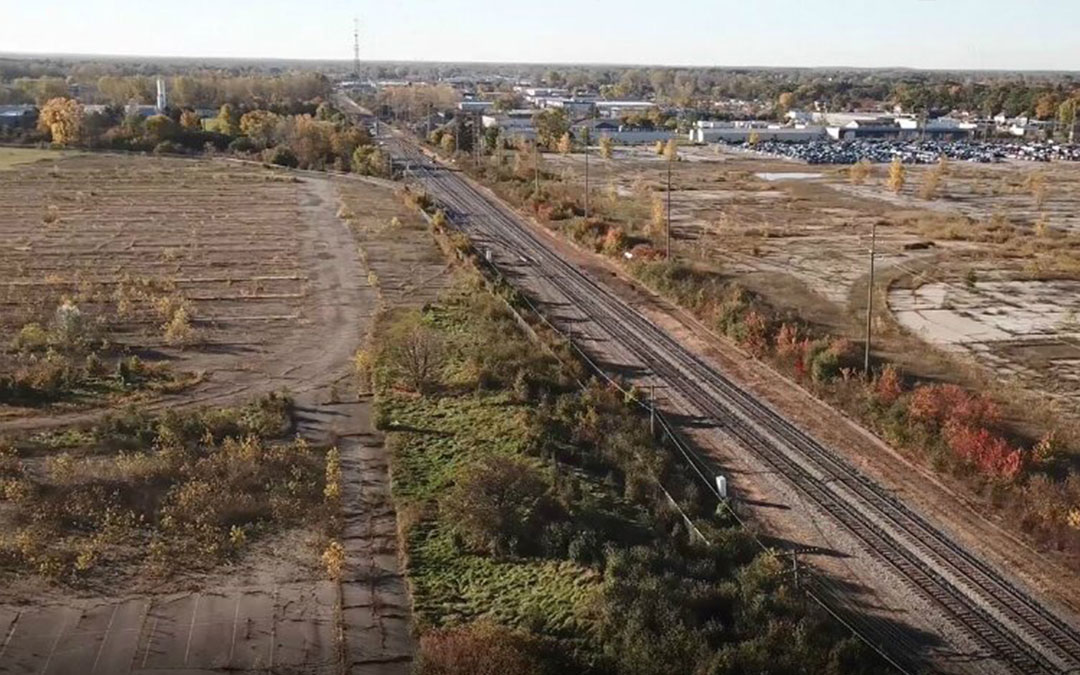 U.S. Environmental Protection Agency has completed its review of a proposed cleanup plan for the former Delphi Flint East Complex, or the Flint Property, between Dort Highway and Averill Avenue in Flint, Michigan. The plan is the first segment of a two-part cleanup known as Phase 1. To conserve limited funding provided by the 2013 bankruptcy settlement for Phase 1 cleanup, the plan is scheduled to begin in the fall of 2023. Phase 1 will address the more contaminated areas of the property. Phase 2 will take place in 2024 and will address as many remaining areas on the Flint Property as allowed by funding.
U.S. Environmental Protection Agency has completed its review of a proposed cleanup plan for the former Delphi Flint East Complex, or the Flint Property, between Dort Highway and Averill Avenue in Flint, Michigan. The plan is the first segment of a two-part cleanup known as Phase 1. To conserve limited funding provided by the 2013 bankruptcy settlement for Phase 1 cleanup, the plan is scheduled to begin in the fall of 2023. Phase 1 will address the more contaminated areas of the property. Phase 2 will take place in 2024 and will address as many remaining areas on the Flint Property as allowed by funding.
Phase 1 Cleanup Plan
There are four onsite areas that have been selected for soil excavation and removal and/or groundwater treatment as part of Phase 1. Three of the areas are in the western part of the Flint Property (Plant 400) and one of the areas is in the eastern part of the Flint Property (Plant 500). These areas were found to contain the highest levels of onsite volatile organic, or VOC contamination. The main objective of the Part 1 cleanup is to treat underground VOCs. This will help to greatly reduce the contaminant plumes. Once reduced, the site will no longer require capture wells to prevent the plume from traveling offsite.
Initial Investigation Results
Before a cleanup plan could be proposed, an investigation had to be done to determine the extent of the Flint Property’s pollution. These initial investigations included vapor intrusion and stormwater sewers. Samples were gathered from surface soil, groundwater wells on and off the Flint Property, stormwater sewers, and soil borings dug on the Flint Property. Contaminants identified were associated with the historical manufacturing of automobile parts and include metals and two classes of chemicals called VOC and semi-volatile, or SVOC, chemicals. VOCs are chemicals that evaporate easily, some of which may dissolve in groundwater. Vapors from VOCs above health-based levels can be dangerous if inhaled. SVOCs are a type of VOC that do not evaporate as easily as VOCs. VOCs found at the site that are known to be hazardous include trichloroethene, carbon tetrachloride, benzene, and toluene. Also identified during initial investigation of the site was PFAS. More information on PFAS on the Flint Property can be found at: https://bit.ly/3R05Z9o
Light non-aqueous phase liquids, or LNAPLs, a class of pollutant that does not readily dissolve in groundwater and floats on the water table, were also present at the site.
Light non-aqueous phase liquids, or LNAPLs, a class of pollutant that does not readily dissolve in groundwater and floats on the water table, were also present at the site. Some of these chemicals (VOCs and LNAPLs) seeped into the groundwater underneath the Flint Property and formed bodies of contaminated water, or plumes. The investigation has determined that the LNAPLs are well contained and do not move offsite. To address VOCs in groundwater, capture wells were installed on the Flint Property that pump the groundwater to the surface and treat it.
How does this affect my health?
While cleanup of the Flint Property is necessary, the investigation concluded that the current threat to the general public’s health in the vicinity of the site is low. Most of the site is covered with concrete slabs, asphalt, or gravel, making exposure to contaminated soil less likely. The investigation also found that private wells are not coming into contact with contaminated groundwater. The Flint Property is several miles from Lake Huron where the city of Flint obtains the water that is supplied to area residents.
There is no connection between the contamination targeted in this cleanup and the city’s water supply. In addition, there is a city ordinance that prevents the use of groundwater within the city limits without approval of the health department, further reducing the risk of exposures to contaminated groundwater.
For more details about the site, visit the webpage at: www.epa.gov/region5/sites/dphflint






